LED Lighting Home Energy Savings Guide
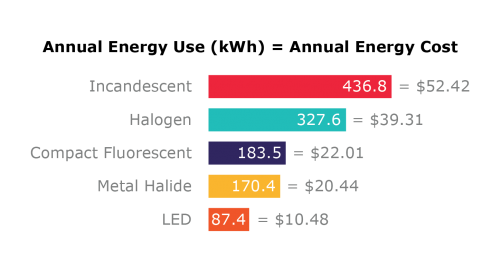
Lighting Energy Guide
With the advent of LEED certification and the general trend towards green technology and home efficiency, lighting technology has become an increasingly critical component of “going green”. While these make nice catch phrases, we hope to dive deeper into the subject and provide a solid knowledge base for those seeking a better understanding of energy efficiency as it pertains to lighting technology.
Home lighting technologies
Some of the most popular lighting technologies for residential and commercial applications include:
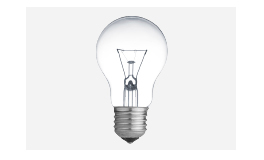 Incandescent: This bulb consists of a glass bulb enclosure containing a wire filament. Electric current passes through the filament, which then heats up and radiates the energy as visible light. Incandescent has been the most common type of bulb for over 100 years and has long held the standard for color rendering and consumers' expectations of how a light bulb should operate, but is slowly being phased out by the Energy Independence and Security Act of 2007 due to its inefficiency. Most incandescent bulbs will be out of production by the end of 2015. Incandescent lamps also emit a significant portion of their energy as ultraviolet and infrared radiation, which are invisible to the human eye but potentially damaging to precious and/or light-sensitive objects. Learn more about replacing your incandescent lights and our Warm Glow Dimming products.
Incandescent: This bulb consists of a glass bulb enclosure containing a wire filament. Electric current passes through the filament, which then heats up and radiates the energy as visible light. Incandescent has been the most common type of bulb for over 100 years and has long held the standard for color rendering and consumers' expectations of how a light bulb should operate, but is slowly being phased out by the Energy Independence and Security Act of 2007 due to its inefficiency. Most incandescent bulbs will be out of production by the end of 2015. Incandescent lamps also emit a significant portion of their energy as ultraviolet and infrared radiation, which are invisible to the human eye but potentially damaging to precious and/or light-sensitive objects. Learn more about replacing your incandescent lights and our Warm Glow Dimming products.
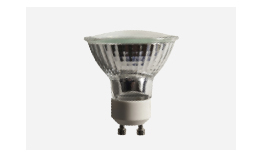 Halogen: A more advanced form of incandescent, the halogen bulb uses halogen gas and a tungsten filament to increase light output and efficiency of the incandescent light bulb. They are known for slightly higher efficiency than typical incandescents, and a brighter, whiter light than is provided by the original incandescent bulb. Halogen lamps are usually the first choice for homeowners, as they are better suited for directional aiming of fixtures and provide more focused beam patterns when used in reflector-lamp formats. Halogen lamps are often used on movie sets and in auto headlights, and are typically found in spotlights and floodlights. General Electric was the first to patent and sell this bulb in 1959. The biggest drawback? The exceptionally short lamp life, similar to that of incandescent lamps, makes these expensive to maintain, especially in high or hard-to-reach locations. Learn more about replacing halogen lighting and our Mini Warm Glow Dimming products.
Halogen: A more advanced form of incandescent, the halogen bulb uses halogen gas and a tungsten filament to increase light output and efficiency of the incandescent light bulb. They are known for slightly higher efficiency than typical incandescents, and a brighter, whiter light than is provided by the original incandescent bulb. Halogen lamps are usually the first choice for homeowners, as they are better suited for directional aiming of fixtures and provide more focused beam patterns when used in reflector-lamp formats. Halogen lamps are often used on movie sets and in auto headlights, and are typically found in spotlights and floodlights. General Electric was the first to patent and sell this bulb in 1959. The biggest drawback? The exceptionally short lamp life, similar to that of incandescent lamps, makes these expensive to maintain, especially in high or hard-to-reach locations. Learn more about replacing halogen lighting and our Mini Warm Glow Dimming products.
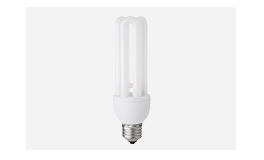 Compact fluorescent: CFLs don’t use a filament to produce light; instead they use a glass tube coated with phosphors that contains a small amount of argon and mercury vapor and electrodes at one end. When electricity is applied, the electrodes generate an invisible ultraviolet light that then excites the fluorescent coating on the inside of the tube to produce visible light. Initially the bulb takes a little longer to turn on, but once on they use about 70% less energy than the equivalent incandescent lamp. The color quality of compact fluorescent lamps is usually subpar as compared with halogen and incandescent, and the dimming performance is not as smooth either, rarely getting down to the minimum light levels that incandescent and halogen can. However, the lamp life is significantly longer - lasting up to 10,000 hourrs and more. Learn more about replacing compact fluorescent lighting and our Color Curve Dimming products.
Compact fluorescent: CFLs don’t use a filament to produce light; instead they use a glass tube coated with phosphors that contains a small amount of argon and mercury vapor and electrodes at one end. When electricity is applied, the electrodes generate an invisible ultraviolet light that then excites the fluorescent coating on the inside of the tube to produce visible light. Initially the bulb takes a little longer to turn on, but once on they use about 70% less energy than the equivalent incandescent lamp. The color quality of compact fluorescent lamps is usually subpar as compared with halogen and incandescent, and the dimming performance is not as smooth either, rarely getting down to the minimum light levels that incandescent and halogen can. However, the lamp life is significantly longer - lasting up to 10,000 hourrs and more. Learn more about replacing compact fluorescent lighting and our Color Curve Dimming products.
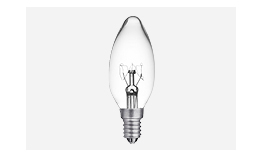 Metal halide: High intensity discharge technology is an arc lamp technology which was developed in the 1960’s. Inside a glass envelope filled with argon gas is an arc tube made of either quartz or ceramic and contains mercury and metal halide salts. The mixture of gas, mercury and halide salts within the tube generates an intense bright white light once heated by the electric arc contained inside. Metal halide lamps are very efficient, have excellent lamp life (some over 20,000 hours), and are capable of putting out a tremendous amount of light, so they’re typically used for high ceiling applications where lots of light is needed, stadium lights, roadway lighting, and parking lot and other exterior lighting applications. The main drawback of metal halide lamps has to do with switching and dimming. Most metal halide lamps cannot turn on while "hot", which means if the power goes out, a restrike time of 15 to 20 minutes is required in order for the lamps to cool off enough to turn back on again. In addition, they are nearly impossible to dim. So although they are great at putting out a lot of light, hopefully that's what you want - because there is only one setting, and that's at 100%. Learn more about replacing metal halide lighting and our Max Output 5.0 products.
Metal halide: High intensity discharge technology is an arc lamp technology which was developed in the 1960’s. Inside a glass envelope filled with argon gas is an arc tube made of either quartz or ceramic and contains mercury and metal halide salts. The mixture of gas, mercury and halide salts within the tube generates an intense bright white light once heated by the electric arc contained inside. Metal halide lamps are very efficient, have excellent lamp life (some over 20,000 hours), and are capable of putting out a tremendous amount of light, so they’re typically used for high ceiling applications where lots of light is needed, stadium lights, roadway lighting, and parking lot and other exterior lighting applications. The main drawback of metal halide lamps has to do with switching and dimming. Most metal halide lamps cannot turn on while "hot", which means if the power goes out, a restrike time of 15 to 20 minutes is required in order for the lamps to cool off enough to turn back on again. In addition, they are nearly impossible to dim. So although they are great at putting out a lot of light, hopefully that's what you want - because there is only one setting, and that's at 100%. Learn more about replacing metal halide lighting and our Max Output 5.0 products.
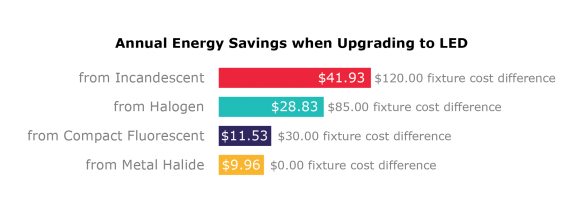 LED: LEDs, or light-emitting diodes, are a solid state technology that have no filament, glass envelope, gas, or mercury. LEDs produce light by the movement of electrons that results from applying an electric voltage difference across a semiconductor material. Each semiconductor material produces light of a specific wavelength range, so on their own, LEDs are not capable of producing white light. Similar to other technologies, white light can be generated with a phosphor coating, while the excitation energy is typically provided by a blue light LED. While they don't get hot in the traditional sense, LEDs do generate heat, it's just not in the light path: it comes out the opposite end, and proper dissipation of this heat through careful thermal management is critical in determining the lifespan of the light source. A hot LED will fail, but a well-designed LED light source can be rated for a 50,000 hr life and longer (in lab conditions some LEDs have been said to last over 100,000 hrs). This surpasses the life of an incandescent bulb by tens of thousands of hours. While LED home lighting is still not the most common form of residential lighting, LED lights have been used in things for years like cell phones, Christmas lights, traffic lights and televisions. LED home lighting is also popular because LEDs use 90% less power than incandescent lights, are ecologically friendly, have zero UV emissions or mercury, and are very durable. Browse all of our LED lighting products.
LED: LEDs, or light-emitting diodes, are a solid state technology that have no filament, glass envelope, gas, or mercury. LEDs produce light by the movement of electrons that results from applying an electric voltage difference across a semiconductor material. Each semiconductor material produces light of a specific wavelength range, so on their own, LEDs are not capable of producing white light. Similar to other technologies, white light can be generated with a phosphor coating, while the excitation energy is typically provided by a blue light LED. While they don't get hot in the traditional sense, LEDs do generate heat, it's just not in the light path: it comes out the opposite end, and proper dissipation of this heat through careful thermal management is critical in determining the lifespan of the light source. A hot LED will fail, but a well-designed LED light source can be rated for a 50,000 hr life and longer (in lab conditions some LEDs have been said to last over 100,000 hrs). This surpasses the life of an incandescent bulb by tens of thousands of hours. While LED home lighting is still not the most common form of residential lighting, LED lights have been used in things for years like cell phones, Christmas lights, traffic lights and televisions. LED home lighting is also popular because LEDs use 90% less power than incandescent lights, are ecologically friendly, have zero UV emissions or mercury, and are very durable. Browse all of our LED lighting products.
Understanding cost and efficiency
The main factors involved in calculating efficiency and cost are:
- Fixture cost
- Lamp life (relamp labor cost and frequency)
- Lamp cost
- Wattage per fixture
- Lumens and lumens/watt (and consequently the # of fixtures needed)
- Usage (hours/day x days/week x weeks/year)
- Energy costs
For this sample situation we made the following assumptions in order to estimate cost of ownership over a 3 year period:
- Lights are on 12 hours per day, seven days per week, 52 weeks per year
- Average energy cost is $0.12 per kWh
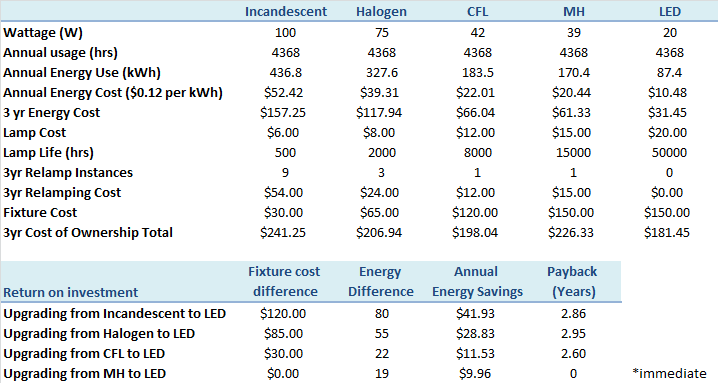
* These numbers are an example for an individual fixture, actual numbers may vary depending on fixtures purchased, energy use patterns, and the size of the project.
Lighting Sustainability Links
The following is a list of internal and external resources on energy saving tips for residential and commercial lighting.
- DTE Energy: Has tips on lighting, appliances, heating & cooling, and water conservation.
- Energy.Gov: Indoor and outdoor lighting tips.
- Duke Energy: 100 ways to save energy at home.
- JEA: Tips for your office lighting and equipment.
- CEC: California Energy Commision's Title 24 energy efficiency standards.
Available Rebates and Tax Credits
The following links will help you find information on obtaining rebates and tax credits for energy efficient lighting products:
- Energy Star: Add your zip code and then scroll down to see results for light bulbs and light fixtures (why do they need to add the zip code?)
- Consumers Energy: Their lighting incentive chart has all the information on how to switch over, and what rebates you’ll receive.
- U.S. Small Business Administration: How to qualify for rebates.
- Energy Tax Incentives : How to qualify, design advice, and bulb recommendation.
- Energy Gov: Has information for renewable energy tax credits, as well energy efficiency tax credits for residential properties.

|

|
Tweet |


